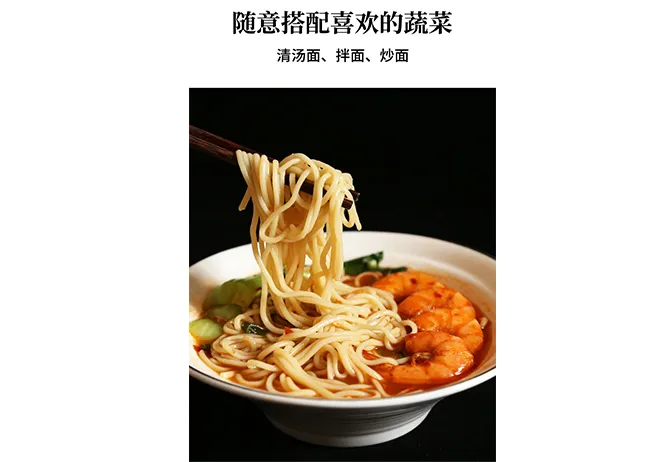3 types of soba noodles
The Delight of Soba Noodles Exploring Three Types
Soba noodles, a highly regarded staple in Japanese cuisine, have gained international appreciation for their unique flavor and health benefits. Made from buckwheat flour, these noodles are not only delicious but also gluten-free, making them suitable for various dietary choices. In this article, we will explore three popular types of soba noodles, each distinct in preparation and culinary application, inviting you to discover the versatility of this beloved dish.
Kake soba is one of the most traditional ways to enjoy soba noodles. Served in a savory dashi broth, often made from kombu (seaweed) and bonito flakes, Kake soba provides a warm, comforting dish perfect for chilly days. The noodles are typically boiled until tender and then transferred to a bowl of steaming broth, which can be further enhanced with green onions, tempura, or even a soft-boiled egg.
The beauty of Kake soba lies in its simplicity; it allows the natural nutty flavor of buckwheat to shine through. Chefs often take care to use high-quality soba to ensure that each bite reflects the essence of this traditional dish. Whether enjoyed in a casual setting or at a formal dinner, Kake soba is a beloved choice that embodies the heart of Japanese comfort food.
2. Cold Soba (Zaru Soba)
On the other end of the spectrum, we find Zaru soba, a dish that epitomizes the cool, refreshing qualities of soba noodles. Served cold, Zaru soba is typically presented on a bamboo mat, accompanied by a dipping sauce known as “tsuyu,” made from soy sauce, mirin, and dashi. To prepare, the soba noodles are boiled, then quickly chilled in ice water to retain their firm texture.
3 types of soba noodles

Zaru soba is particularly popular in the summertime when the heat calls for lighter and more refreshing meals. The act of dipping the noodles into the savory sauce before each bite enhances the dining experience, allowing for a delightful contrast between the chewy noodles and the umami-rich sauce. Many people enjoy pairing Zaru soba with an array of toppings, including sliced green onions, wasabi, and nori (seaweed), adding layers of flavor and texture.
3. Soba Salad (Soba Salad with Vegetables)
Moving beyond traditional preparations, the soba salad has emerged as a modern favorite, fusing the essence of soba with freshness and vibrancy. Soba salad typically incorporates a variety of seasonal vegetables, such as cucumber, carrots, and bell peppers, all tossed in a light vinaigrette or a sesame dressing. This dish exemplifies the balance of flavors and textures that Japanese cuisine is known for, combining the chewy noodles with crunchy, crisp vegetables.
One of the great things about soba salad is its versatility. You can easily add proteins like grilled chicken, shrimp, or tofu to elevate the dish into a more substantial meal. The dressing can also be customized with ingredients like soy sauce, rice vinegar, and sesame oil to cater to your taste preferences. Not only is soba salad a healthy option, but it also brings a burst of color and nutrition to the table, making it an appealing dish for both casual gatherings and special occasions.
Conclusion
Soba noodles are a testament to the diversity and depth of Japanese cuisine. Whether you prefer the warmth of Kake soba, the refreshing nature of Zaru soba, or the vibrant flavors of a soba salad, there is undoubtedly a soba dish to suit every palate. As you explore these three types, you’ll discover that soba is more than just a noodle; it’s a canvas for creativity in the kitchen. So, gather your ingredients, experiment with flavors, and enjoy the delightful world of soba noodles. Each bowl of soba tells a story, and it’s one worth savoring.
-
Unleash Your Inner Chef with Delectable Italian Pasta CreationsNewsAug.01,2025
-
Savor Health and Flavor: Irresistible Soba Noodles for Sale Await!NewsAug.01,2025
-
Nourish Your Body with Premium Organic Ramen - A Culinary Delight AwaitsNewsAug.01,2025
-
Elevate Your Dishes with Our Exquisite Kinds of Egg NoodlesNewsAug.01,2025
-
Dive into Flavorful Convenience with Our Ramen OfferingsNewsAug.01,2025
-
Discover Exquisite Types of Naengmyeon and Chilled Soba NoodlesNewsAug.01,2025
-
Is Whole Wheat Pasta Healthy?NewsMay.30,2025
Browse qua the following product new the we

















































































































